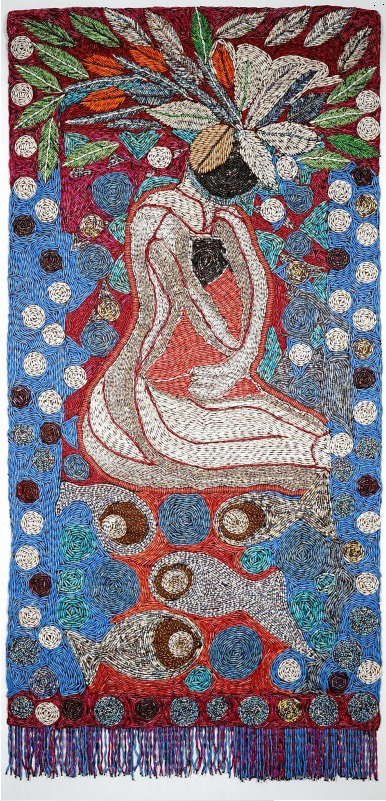October 26, 2022
Download as PDF
View on The Independent

Kamapala, Uganda | DOMINIC MUWANGUZI | Sanaa Gateja is no stranger to international showcase of his art and reputation. He has over the decades showcased his art at major art forums in London, USA, Paris and Johannesburg, South Africa. His ongoing participation in Carnegie International 58th edition, cements his luminary achievements in a career that spans more than forty years. The Bead King like is known locally in his home country Uganda, is showcasing his traditional artworks that straddle the identity of tapestry, sculpture and installation. Through the work the artist explores and builds conversations on cultural identity and conservation, recycling and migration.
The featuring of Gateja in the oldest exhibition dedicated to global contemporary art in North America, points to the emerging strength and prominence of Contemporary Art from Africa and its producers, the artists. Running under the theme Is it Morning for you yet?, the exhibition presents historical works from collections of international institutions, estates and artists, alongside new commissions and recent works by contemporary artists. In the exhibition, Sanaa presents works that are new and therefore their inclusion is a representation of the objective of showing something fresh and unique in an exhibition that was established in 1896. But within the context of the theme of the exhibition, Sanaa’s work seemingly fits in appropriately to reflect on the principle of anti-imperialism and decolonization that runs delicately in the work that was selected for the show. Critics have therefore described the theme as over-arching; investigating into the role of the United States in enforcing social order since 1945.
These political social sentiments of the show withstanding, Sanaa’s work here imbues elements of innovation and social – economic sustainability that make it internationally reputable. The artist constructs his artworks mainly from bark cloth and raffia which are organic media and are locally sourced. He equally works with hundreds of women in his Kwetu Africa Studio, thereby providing a livelihood to them and their families. The technique of producing the startling artwork is a combination of artisanal skills display; typical of the traditional stylistic methods of basketry weaving and beading in his ancestral home of Kisoro, Western Uganda; and contemporary art making elements that explore concept, theme and colour aesthetics.
Sanaa’s sculptures / tapestries evoke a rich cultural heritage that cannot be ignored. At such an international forum they emerge as symbols of African indigenous histories and cultures that remain relevant and powerful in the 21st century. This symbolism again reinforces the contribution art can make to international debates on cultural identity in the midst of the ongoing search for global citizenship. Artistically, the artist’s outstanding output is a reflection of how innovation and creativity can spur an artist to greater heights. Sanaa’s creative ingenuity is borne out of years of intense practice and exposure to art, with no formal art training. Through observation and practice, the artist managed to perfect his craft with an edge of inventiveness.
The Carnegie International exhibition taking place in Pittsburgh, offers extended opportunities to artists globally to enjoy the limelight through the showcase of their collected or commissioned art to larger audiences. With such global recognition and reputation for the exhibition, artists especially those from the African continent, continue to grow their network of museums, art curators and private collectors. Sanaa’s fortunes therefore will certainly continue to flourish but the biggest beneficiary here is the local art industry. The artist’s visibility globally is something it can capitalize on interms of raising the profile of Ugandan art.



